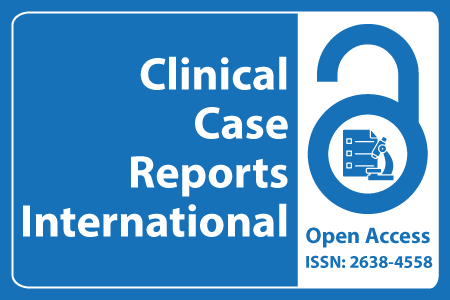
Journal Basic Info
- Impact Factor: 0.285**
- H-Index: 6
- ISSN: 2638-4558
- DOI: 10.25107/2638-4558
Major Scope
- Nursing
- Endocrinology
- Pathology
- Physical Medicine & Rehabilitation
- Hepatology
- Sports Medicine
- Urology Cases
- Pneumonia
Abstract
Citation: Clin Case Rep Int. 2022;6(1):1408.DOI: 10.25107/2638-4558.1408
A De novo Mutation in KRT10 Gene in an Infant with Epidermolytic Hyperkeratotic
Guo L, Hu X, Mi R and Yang Y
Department of Neonatology, Capital Institute of Pediatrics, China
PDF Full Text Case Report | Open Access
Abstract:
Epidermolytic Hyperkeratosis (EHK) is a rare autosomal dominant genodermatosis and caused by mutations in KRT1 gen or KRT10 gene. The clinical features of EHK are erythroderma, scales, and formation of epidermal blisters at birth, and later the blistering and redness will be replaced by progressive hyperkeratosis in the stratum corneum mainly involving the flexion skin of the extremities, and with thick grayish brown scales. Besides the more than 120 mutations of KRT1 and KRT10 genes have been identified in EHK in Human Gene Mutation Database. It is a novel heterozygous missense variation (c.494G>C, p.R165P) in exon 1 of the KRT10 gene. Our finding will be benefit for early diagnosis of EHK and might lead to better treatment.
Keywords:
Epidermolytic hyperkeratosis; Infant; KRT10 mutation
Cite the Article:
Guo L, Hu X, Mi R and Yang Y. A De novo Mutation in KRT10 Gene in an Infant with Epidermolytic Hyperkeratotic. Clin Case Rep Int. 2022; 6: 1408.













